Research Projects
As a research intensive department, we have over 150 graduate students, 30 faculty members, and numerous Research Assistants and Postdoctoral Fellows. While our faculty teach courses, they also carry out research, supervise graduate students, and collaborate with industry. Our research ranges from theoretical computer science to practical applications, leading to solving real world problems. Following is a glimpse at multi-disciplinary research projects.
Caregiver Self-Compassion and Support App
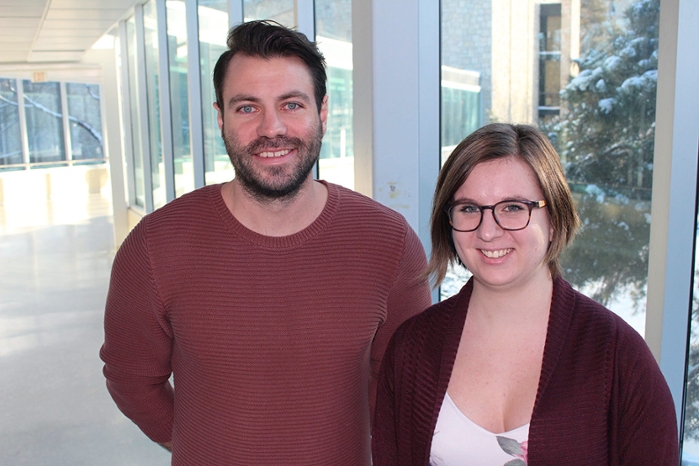
USask computer science PhD student Jenna Neiser said she has noticed a lack of resources and accessibility in Saskatchewan, when it comes to caregiver health. That’s one of the major reasons behind the creation of the Caregiver Self-Compassion and Support App. Through the use of curated podcasts, videos, articles and other useful information, the app takes participants through an eight-week program concentrating on areas such as sleep, hygiene, physical activity and nutrition.
“The idea is once they get through the eight weeks, they’ll sort of not be quite as hard on themselves,” said USask kinesiology PhD student Nathan Reis. “This approach of self-care will ultimately help them, not only be kinder to themselves, but be more effective caregivers, too,” he said.
Computer modelling to help save Tasmanian devils
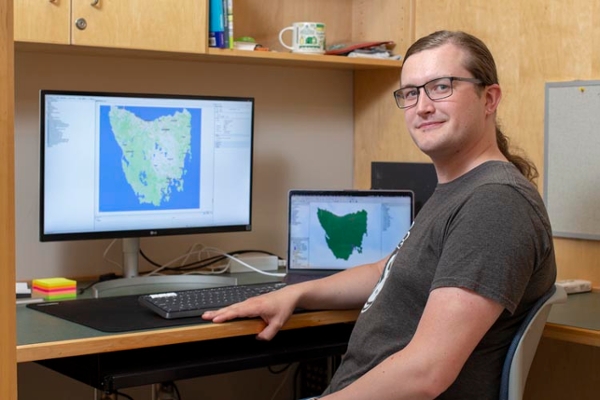
“What we’re trying to do is capture behaviour of individual Tasmanian devils, so we use this software called AnyLogic,” he said, noting data streams related to Tasmanian devil movements, interactions, disease state and various threats—such as being hit by vehicles or killed by dogs—can be captured and placed into one comprehensive map.
The simulation software allows users to safely test and explore different “what-if” scenarios. As a result, Lamp can investigate various types of interventions aimed at boosting the Tasmanian devil population and reducing disease transmission before anything is actually tried in the wild.
In the computer model Lamp is working on, individual Tasmanian devils will make decisions based on their needs, such as finding food. In the process, a male devil may seek out a female during mating season, or encounter another male devil and get into a fight.
System to Improve Online Privacy
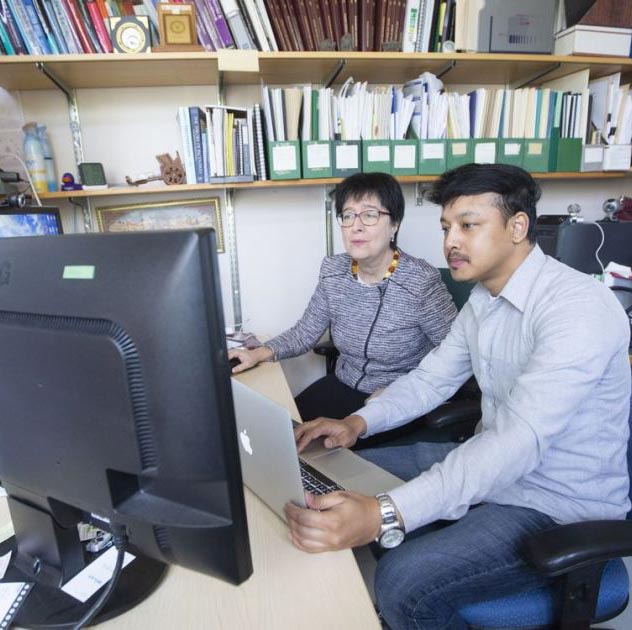
Ajay Shrestha has developed a web application that helps users store their data permanently and set conditions for others to access the data. The researchers’ goal is to make research collaboration across the globe easier and fairer for researchers, but the project could also apply to business and social media.
Our system may be used for data sharing on social networks,” said Shrestha, who moved to U of S from Nepal. “Users could retain control over their data, instead of giving up their personal information to companies such as Facebook or Google that use it to earn billions by selling personalized ads.”
The lack of user consent has fuelled the recent scandal that saw Cambridge Analytica gathering user data through a Facebook application. Cambridge Analytica allegedly used the data to tailor Facebook advertisements that may have influenced voting in the 2016 U.S. elections.
In a world where privacy is increasingly an issue, the new system may tip the balance by using blockchain. This technology creates a permanent, unchangeable record of transactions that tracks how data are shared and accessed. It is best known for exchanging the Bitcoin virtual currency.
Touchscreen Menu Innovation
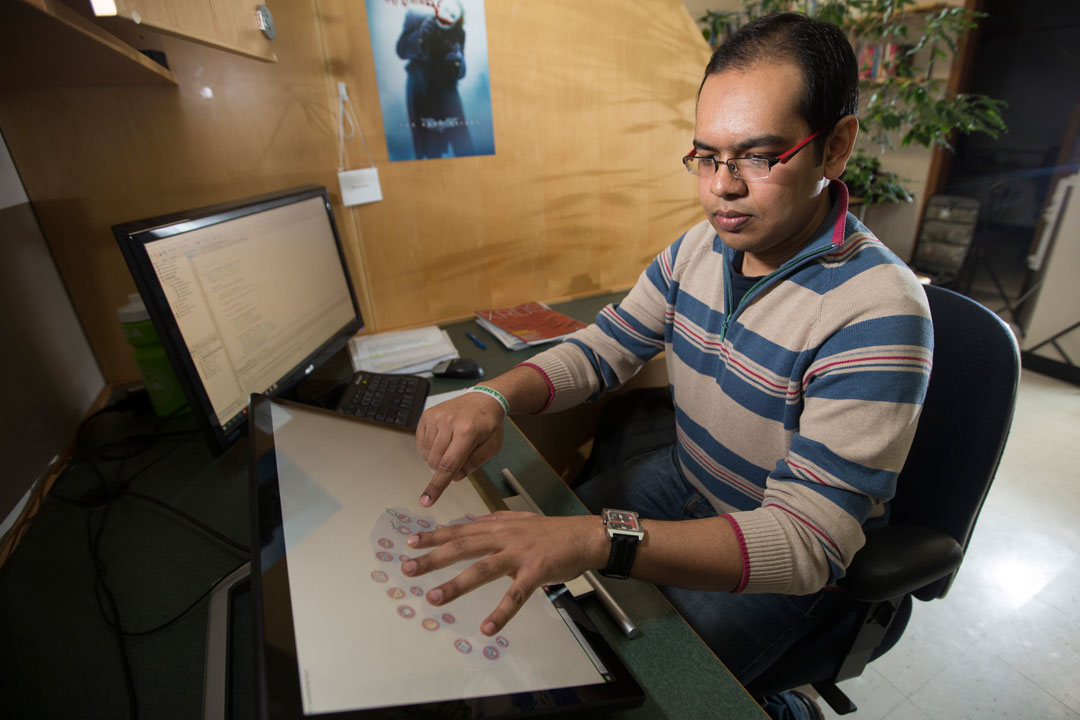
Users have to touch the screen palms down. Different sets of commands then pop up around the fingers. Users use all of their fingers to interact with the screen, instead of the more common one or two finger tapping and swiping. Since the menu is based around users' hands, it helps them remember the location of commands with fingers serving as memory cues. Uddin has tested the menu with thirteen users and results show that the time needed for learning how to use the menu is similar to current devices with similar error rates.
Currently, HandMark-Finger comes with approximately forty commands. While more research and re-design is necessary before it could reach commercial devices, initial results are promising. The focus now is on how to best group commands on screen and look at conducting a large scale study.
The project is funded by NSERC and is part of the U of S Interaction Lab.
USASK news article
Project Beetle
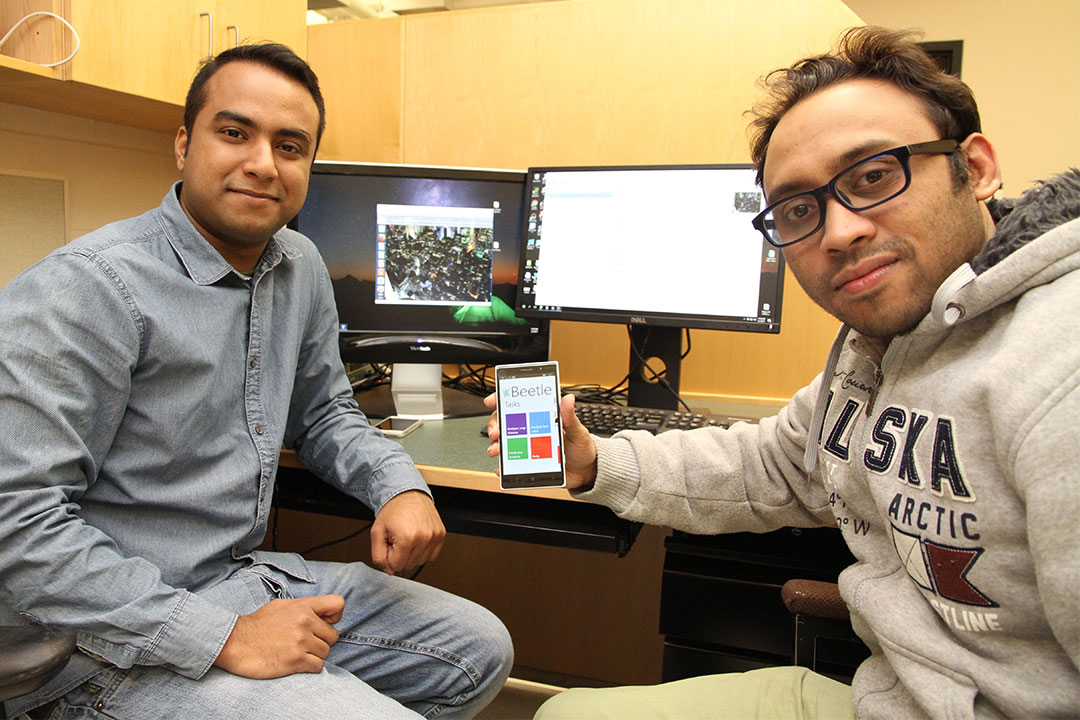
Yasir was inspired to create the app after speaking with a farmer from the Tisdale area. He listened to the farmer's stories of walking through crops, checking for signs of disease, pest infestation, and areas that required herbicide or fertilizer. All of which is a very painstaking manual process.
His app will allow farmers to survey crop health with efficiency. The app works like this: a farmer takes a photo of a leaf and the app scans it. Then, it provides a breakdown of possible health issues, such as potential diseases, nutritional information, and an estimate of how much of the surrounding crop is similarly affected. The app makes use of artificial neural networks. This has allowed them to compress their entire informational database on different crop diseases directly into the app itself. The app can therefore function even without access to the internet, although it does become more expansive when running online. Next steps including hoping to partner with others working in similar areas, or with government agencies that could grant access to data on crop diseases.
The app earned first place at the January 2017 Emerging Agriculture Hackathon. It also earned 5th place at the 2017 Pitch Party - a way to connect creators, innovators, and entrepreneurs from across different backgrounds, showcase local startups, and get attendees thinking creatively and building ideas.
USASK news article
Rational Design: The Search for Materials Harder than Diamonds

Very recently, a new paradigm has emerged in the design of new materials: rational design. Rational design of materials refers to the use of computer simulation, through solving quantum mechanical models, in order to predict the properties of a material from its atomic structure. The idea is that if a mathematical model can reliably predict the properties of a material, one can use supercomputers to efficiently search the space of possible atoms and their positions to construct materials that have optimal properties. Rational design reduces the propose-test-modify cycle and gets new materials from the laboratory to the marketplace in far less time than traditional methods do. Rational design is already an indispensable part of the aerospace, automotive, and pharmaceutical industries. Using rational deisgn, Dr. Raymond Spiteri and his Simulation Research Lab are researching materials harder than diamonds.
New materials have fed technological innovation throughout human history. A million years ago, humans searched for materials that could burn easily or were harder than rock. Today, the quest is for materials that are harder than diamond, more conductive than silver, or more insulating than aerogel.
The classical way to design materials is through experiments. Experiments are expensive, slow, often hazardous, and require a significant amount of human expertise and intervention. Success can often be directly attributed to the experimentalist and the equipment. However, these two success factors are also the two greatest limitations on the materials that can be discovered.
In this project, we propose to discover new materials that can be fabricated under high pressure and have superior material properties such as hardness, thermal power, ductility, and malleability. A significant advantage of developing our own software for this problem is that we can incorporate aspects like cost of manufacturing or impact on provincial or national economies. So for example, a material it may be more valuable to discover a material that is only 80% as hard as diamond but costs only 20% as much to fabricate.
As a first specific example, we are attempting to design a material that is harder than diamond. We have spent around 10,000 CPU hours (just over 1 CPU-year) on this problem so far (and counting!). The search is made extraordinarily challenging because it is fragile: it is not possible to extract meaningful information from an arbitrary configuration of atoms, i.e., configurations that are too far from something physically reasonable. We expect it will take at least one hundred times more CPU time (so about 1 CPU-century) in order to conduct a reasonably thorough search of the design space. And it is of course not guaranteed we will be successful. That's why it's called research!
Wheelchair-based Game Design for Older Adults
Digging Archaelogy Data: Image Search and Markup
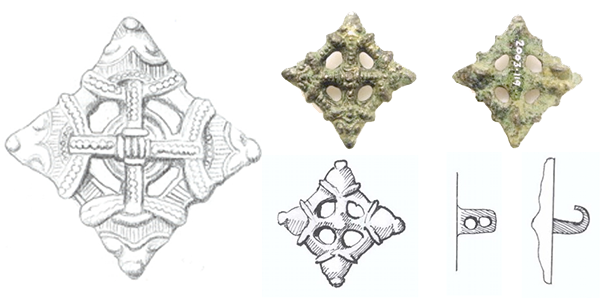
Dr. Mark Eramian is a member of an international team of researchers who are investigating interactive systems design in conjunction with image processing and text mining techniques to help archaeologists find, organize and analyze the thousands of images and document resources available to them to answer archaeology-based research questions.
Current archeological data banks are so large that it could take several lifetimes for an archaeologist to find specific answers. Images are typically searched by keyword, which has serious limitations. These searches depend on metadata: descriptive text that is added to the image files when they are uploaded. When an archeologist types in a key word, there are no guarentees that the items they are looking for in the data bank are tagged with the same metatadata keywords, or if the items are even tagged at all. If the quality of the metadata is poor, text-based searches will not suffice.
Eramian’s contribution is in image analysis, something he has applied to everything from high-resolution ultrasound of the reproductive tract and microscope images of cancer cells, to technology to help farmers seed crops more efficiently. For this project, the challenge will be to create an image-based search that recognizes shapes, even if they are only partially there or seen from different angles. They will need to determine which part of the image actually contains the object, followed by analyzing and recording shape, color and texture properties.
Augmented Table Top Embodiments
Andre Doucette's research focuses on human behaviour and how the design of digital systems can affect the mannner people interact with systems. Specifically, this research project investigated how people coordinate the use of physical space above a tabletop, and how it translated into the digital world. From his research, touching digital tabletop embodiments is not as awkward as it is to touch a physical arm. In collaboration with the Human-Computer Interaction Lab, Andre developed a set of augmented tabletop embodiments to try to introduce some of the automatic coordinative benefits of physical arms into digital tabletop systems.
Key Frame Animation
For his Computer Graphics (CMPT 829) project, Mike Sheinin wanted to learn all the steps involved when creating a 3D character animation. He started with a 3D character model, gave it a skeleton so it could move, then used key-frame animation in Blender to acheive the finished product.
This project was developed for CMPT 829: Computer Graphics, taught by Professor Ian Stavness. Mike chose this project to learn something that would hopefully be beneficial in a future career in video game development. Learning how 3D character animation worked gave Mike hands-on practical knowledge of the techniques and tools that professionals use to create 3D movies and games. Throughout the project, Mike enjoyed learning about the history of animation and how it has grown with the use of computers. He was interested to learn how animated movies are created, such as Toy Story.
The 3D character animation was developed first with a 3D character model, which then was rigged to give the model a skeleton. The character was skinned and connected to the skeleton. Finally keyframe animation in Blender was used to get the finished product. The bulk of the animation was developed using Blender, a free open-source 3D graphics and animation software. The original character model was created from blendswap.com, a great resource of Blender-specific models.
When asked if he had more time and money to work on this project, Mike would create more animations for this character, such as running, jumping, throwing, etc. He envisions his charatcer being used as a common animation seen in a variety video games. If he could create multiple characters, then he could eventually create a new game using his own animations. It has always been a mystery to Mike how to make his own 3D game, but now he has the skillset to create one himself.

